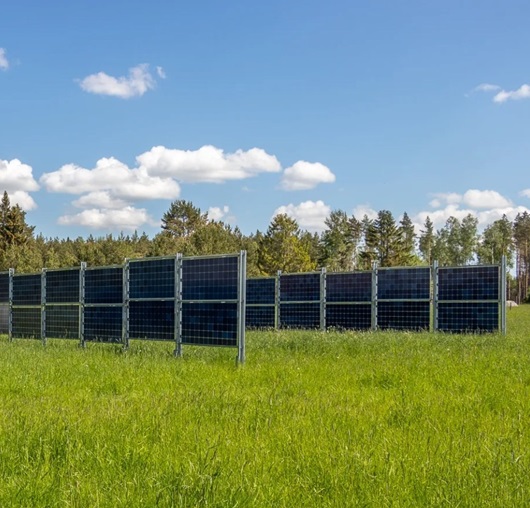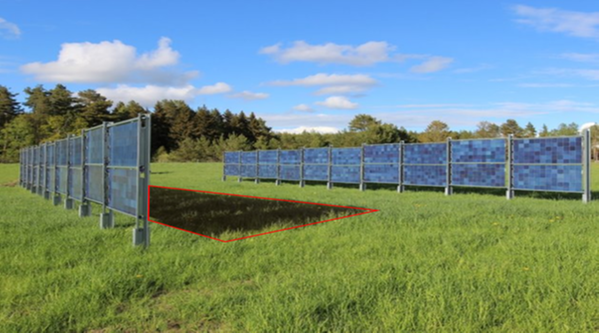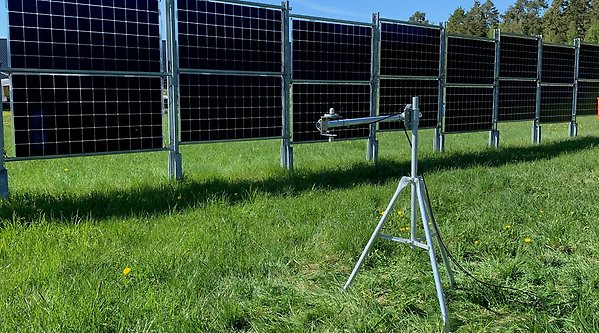4. Land Sharing

Source: Mälardalen University, Pietro Campana
Sustainability goal conflicts over the use of agricultural land and roof space can be addressed by combining PV systems with other land uses, in which one or more ecosystem service (e.g. food production, water management or provision of biodiversity) is provided simultaneously with PV energy. Agrivoltaics will play a unique role in this nexus. Such systems open new target markets and provide new business opportunities for PV installers, but they need careful evaluation in the Swedish climate, considering both the requirements for maintaining the relevant ecosystem services, as well as of the PV system itself. Regulatory aspects and stakeholder willingness to adopt are also of interest when new types of land use are in question. SOLVE will address the challenges for system design, modelling of both electricity yield and crop yield, and co-optimisation. It will contribute to a national network of test beds to find practical, profitable and sustainable land sharing models for PV systems in the Swedish climate and market.
Theme Leaders
Projects in Theme 4
PhD project: Water-food-energy nexus modeling of agrivoltaic systems

In this research project, a model is developed to accurately simulate both the electricity production and crop yields dependent on agrivoltaic system design and geographical location. A cutting-edge model for agrivoltaic systems can be used to understand how shadings that occur by PV modules might affect crop productivity and soil moisture. In addition, algorithms are developed to co-optimize crop yield and electricity production. The model will contribute to a facilitated decision-making process in finding an optimal agrivoltaic system.
Sebastian Zainali - PhD Student at Mälardalen University
PhD project: Solar irradiance assessment under agrivoltaic systems and integration of spectrally selective solar cells to boost spectral sharing of sun light

An agrivoltaic system is a solution that uses the same portion of land for both growing crops and solar power conversion tackling the growing conflict between using agricultural land for food production or renewable power plants. At the same time, this technology helps fulfilling several sustainable development goals such as zero hunger (SDG2), affordable and clean energy (SDG7) and climate action (SDG13).
My research consists of developing models that accurately estimate the interactions between the crops and the solar panels in an agrivoltaic system. The investigation includes experimentation primarily in the agrivoltaic research facility in Kärrbo Prästgård, near Västerås but also other facilities, to better understand the synergies between different kinds of crops and solar panels technologies in Nordic climates. A special focus of the research will be on both broadband and spectral solar irradiance, photosynthetically active radiation and albedo models. Integrating spectrally selective solar cells that have the ability to absorb the wavelengths of light not useful for crops and let pass the favourable ones will also be part of my research.
Silvia Ma Lu – PhD Student at Mälardalen University
Key Theme Partners
Air By Solar, Elsäkerhetsverket, European Energy, Glava Energy Center, Kraftpojkarna, Next2Sun, Region Uppsala, Region Västmanland, Solkompaniet, Svea Solar, Svenska kyrkan

%20Pietro%20Campana.jpg)
